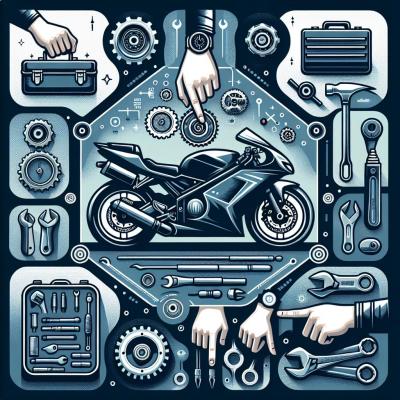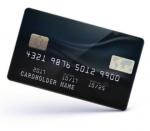However, with this excitement comes the responsibility of maintaining your motorcycle to ensure its longevity and performance. Proper upkeep can not only enhance your bike's lifespan but also ensure a safe and enjoyable riding experience.
In this guide, we’ll delve into the essential bike maintenance tips for Australian motorcycle buyers. From understanding your riding needs to setting a budget, choosing the right motorcycle, and ensuring proper maintenance—this guide covers all the key factors you need to consider.
Preparing Your Motorcycle for Maintenance
Necessary Tools You’ll Need
Before you begin any maintenance work, it's vital to gather all the necessary tools. Essentials include a basic toolkit with wrenches, screwdrivers, and pliers. You might also need a tire pressure gauge, chain lubricant, oil filter wrench, and spark plug socket.
Ensure you have a motorcycle-specific toolkit, as standard tools might not fit specific bolts and screws on your bike. Additionally, investing in a motorcycle stand can make tasks like chain adjustments and wheel maintenance easier and safer.
Setting Up Your Workspace
Your workspace plays a crucial role in efficient bike maintenance. Clear a well-ventilated area with good lighting where you can move around freely. It's helpful to have a sturdy workbench to keep your tools and parts organized.
Lay down a non-slip mat or piece of cardboard to catch any drips or spills. Having a clean space helps in identifying leaks or dropped parts quickly, making the maintenance process smoother and less stressful.
Safety Precautions to Consider
Safety should be your top priority. Always wear protective gear, such as gloves and safety glasses, to shield yourself from oils and debris. Ensure your motorcycle is securely supported on a stand and won't tip over while you work.
Disconnect the battery to avoid accidental sparks, especially when dealing with electrical components. Take your time and follow the manufacturer's instructions for each task to prevent mistakes that could lead to accidents or further damage.
Essential Maintenance Checks
Tire Pressure and Tread Depth
One of the most critical aspects of motorcycle maintenance is regularly checking your tire pressure and tread depth. Properly inflated tires ensure optimal handling and safety, reducing the risk of accidents due to blowouts or poor traction.
Use a tire pressure gauge to check the pressure, and compare it to the manufacturer's recommendations found in your motorcycle's manual. Additionally, inspect the tire tread for wear and tear. Worn-out tires can drastically affect your bike's performance and safety.
If the tread depth is below the minimum level indicated by the manufacturer, it's time to replace the tires. Regular checks can help you catch these issues early and avoid unexpected failures.
Inspecting and Replacing the Brake Pads
Brakes are a critical component of your motorcycle's safety system. Regularly inspecting and replacing brake pads helps ensure you have reliable stopping power. Worn-out brake pads can compromise your ability to brake effectively, posing a significant risk.
Check the brake pads for any signs of thinning or uneven wear. If the pads are less than 2-3 mm thick, they should be replaced immediately. You can do this by visually inspecting the pads through the calipers.
Replacements can typically be done at home with basic tools, but if you're unsure, it's best to consult a professional to ensure it's done correctly and safely.
Checking and Replacing Engine Oil
Regularly checking and replacing your engine oil is crucial for keeping your motorcycle's engine running smoothly. Engine oil lubricates the engine's moving parts, reducing friction and preventing overheating.
To check the oil level, use the dipstick or oil window, depending on your bike's design. The oil level should be between the minimum and maximum marks. Additionally, check the oil's color and consistency—if it's dark or gritty, it’s time for a change.
Changing the engine oil typically involves draining the old oil, replacing the oil filter, and adding fresh oil. Refer to your motorcycle’s manual for the recommended oil type and change intervals to maintain optimal engine health.
Additional Regular Maintenance Tasks
Lubricating and Adjusting the Chain
The motorcycle’s chain is vital for transferring power from the engine to the wheels. Regular lubrication and adjustment ensure smooth operation and prevent premature wear.
To lubricate the chain, use a motorcycle-specific chain lubricant. Apply it evenly while rotating the wheel to ensure the entire chain is covered.
Adjusting the chain is equally important. If the chain is too tight or too loose, it can cause excessive wear or even lead to chain failure. Check your motorcycle’s manual for the proper tension and adjust accordingly using the designated adjustment points.
Inspecting and Cleaning the Air Filter
The air filter prevents dirt and debris from entering the engine, ensuring optimal performance. A clogged air filter can lead to reduced fuel efficiency and power loss.
Inspect the air filter regularly. If it appears dirty or clogged, it’s time to clean or replace it. Depending on the type of filter, you may need to use compressed air to blow out the dirt or wash it with a mild detergent.
Always allow the air filter to dry completely before reinstalling it. Check your motorcycle’s manual for specific cleaning or replacement intervals to keep the engine breathing freely.
Checking the Battery and Electrical System
A healthy battery and functioning electrical system are crucial for your motorcycle’s reliability. Inspect the battery terminals for corrosion and ensure they’re securely connected.
Regularly check the battery's charge level using a voltmeter. Most motorcycle batteries should be between 12.6 and 12.8 volts when fully charged. If the charge is low, it may be time to recharge or replace the battery.
Additionally, inspect the electrical system, including lights, indicators, and the ignition system, to ensure everything is in working order. Address any issues promptly to avoid unexpected breakdowns.
Seasonal Bike Maintenance Tips
Preparing Your Bike for Winter
Winter can be tough on motorcycles, so it's essential to take extra steps to prepare your bike for the colder months. Start by giving your bike a thorough wash to remove dirt and grime that can cause corrosion.
Ensure all moving parts are well-lubricated, including the chain, to prevent rust. Consider using a fuel stabilizer in your tank to avoid fuel degradation, and make sure the battery is fully charged before storing it.
Additionally, check your tires for proper pressure and adequate tread, as cold weather can impact their performance. Cover your motorcycle with a good-quality cover to protect it from the elements.
Summer Maintenance Tips
Summer brings its own set of challenges, primarily due to increased heat. Ensure your coolant levels are adequate to avoid overheating. Regularly check the integrity of your hoses and cooling system to prevent leaks.
During the hot months, tire pressure can fluctuate, so check it frequently to maintain optimal handling and safety. Also, ensure your engine oil is fresh and at the correct level, as it works harder in the heat.
Protecting your bike from the sun is crucial. Use a cover when parked for extended periods to prevent UV damage. Finally, consider using a higher-grade lubricant for the chain to withstand the summer heat.
How to Store Your Bike During the Off-Season
If you plan to store your motorcycle for an extended period, there are several steps to take to ensure it remains in good condition. Clean your motorcycle thoroughly to remove dirt and prevent rust.
Change the oil and filter, as used oil can contain contaminants that may damage your engine over time. Fill the fuel tank and add a stabilizer to prevent the fuel from breaking down and causing issues in the fuel system.
Disconnect the battery and store it in a cool, dry place or use a trickle charger to maintain its charge. Elevate the bike on stands to take the weight off the tires and cover it to protect against dust and moisture.
Common Maintenance Mistakes to Avoid
Overlooking Small Issues
It's easy to overlook small issues when maintaining your motorcycle, but these can compound into significant problems over time. For instance, a minor oil leak might not seem like a big deal initially, but it can lead to severe engine damage if left unattended.
Regularly inspect your motorcycle for any signs of trouble, such as unusual noises, changes in performance, or visible wear and tear. Address these issues promptly to prevent them from escalating and costing more in repairs later on.
Pay attention to your motorcycle’s feel and performance while riding, as it can often give clues about underlying issues that need immediate attention.
Using the Wrong Type of Oil or Lubricant
Using the incorrect type of oil or lubricant is a common mistake that can adversely affect your motorcycle's performance. Each motorcycle requires a specific type of oil and lubricant, which is usually mentioned in the owner's manual.
Using the wrong oil can lead to inadequate lubrication, increased friction, and potentially severe engine damage. In the same way, the wrong chain lubricant can cause premature wear or even chain failure.
Always refer to your motorcycle’s manual and use the recommended oil and lubricants. If in doubt, consult a professional to ensure you're making the right choice for your bike.
Ignoring Manufacturer Recommendations
Manufacturers provide specific maintenance schedules and guidelines for a reason—they have the best understanding of what your motorcycle needs to perform optimally. Ignoring these recommendations can result in missed maintenance tasks and reduced bike longevity.
Commonly overlooked tasks include timely oil changes, proper chain adjustments, and regular air filter checks. Sticking to the manufacturer’s recommended schedule helps keep your bike in top shape and maintains its resale value.
By adhering to these guidelines, you can ensure safety and reliability, ultimately offering you a more enjoyable riding experience. Make it a habit to review the maintenance section of your manual periodically.
Quick Fixes for On-the-Road Issues
Dealing with a Flat Tire
Experiencing a flat tire while on the road can be daunting, but knowing how to address it quickly can save the day. Always carry a portable tire repair kit that includes tire plugs, a tire pump, or a CO2 inflator.
If you get a flat tire, first find a safe spot to pull over. Inspect the tire to locate the puncture. Use the plugs from your kit to seal the hole, following the kit's instructions. Once plugged, inflate the tire using your pump or CO2 cartridges.
These solutions are temporary fixes designed to get you to a repair shop safely. Avoid riding on a plugged tire for long distances, as it is not a permanent solution.
Temporary Fixes for a Broken Chain
A broken chain can leave you stranded, but a few tools and some know-how can get you back on the road temporarily. Carry a basic chain repair kit with master links and a chain breaker tool.
If your chain breaks, first assess the damage and remove any damaged links using the chain breaker. Fit a master link to join the broken ends of the chain. Ensure the master link is secure before riding.
Keep in mind that this is only a temporary measure. Once you reach home or a repair shop, replace the chain to ensure continued safe operation.
Basic Troubleshooting of Electrical Problems
Electrical issues can range from a weak battery to malfunctioning lights. Carry a multimeter and some basic tools to help diagnose and fix minor electrical problems on the go.
If your bike won’t start, use the multimeter to check the battery voltage. If the reading is below 12.6 volts, you might need a jump start or to replace the battery. Check the terminals for corrosion or loose connections and clean or tighten as necessary.
For light-related issues, inspect the bulbs and fuses. Replace any blown fuses or burnt-out bulbs. Always carry a few spare fuses and bulbs in your toolkit. These simple checks can often resolve electrical issues and get you back on the road quickly.
When to Seek Professional Help
Identifying Problems Beyond Basic Maintenance
While regular at-home maintenance can keep your motorcycle in good shape, certain issues may require professional assistance. If you notice persistent problems like unusual noises, significant power loss, or excessive smoke, it's time to consider seeking expert advice.
Additionally, issues with complex systems such as the engine or transmission often demand specialized tools and expertise that go beyond basic maintenance skills. Attempting to fix these problems on your own can sometimes worsen the situation.
Recognizing when a problem is out of your depth ensures that your motorcycle receives the appropriate care and prevents further complications.
How to Find a Reliable Mechanic in Australia
Finding a trustworthy mechanic is crucial for ensuring your motorcycle gets the best possible service. Start by asking fellow riders for recommendations; their experiences can provide valuable insights.
Online reviews and forums are also helpful resources. Look for mechanics with consistently positive feedback and a strong reputation for quality work. It's often a good idea to visit the shop in person to get a feel for their professionalism and expertise.
Ensure the mechanic is familiar with your motorcycle's make and model. Compatibility with your brand can make a significant difference in the quality of service you receive.
The Benefits of Professional Servicing
Professional servicing offers several advantages that can enhance your motorcycle's performance and longevity. Expert mechanics have the training and experience to diagnose and fix issues accurately, often spotting potential problems before they become serious.
Professionals use specialized tools and equipment designed to work with your bike's specific systems, ensuring precise and safe repairs. Regular professional check-ups can also keep your motorcycle in line with manufacturer recommendations, maintaining warranties and resale value.
Ultimately, entrusting your bike to a professional can provide peace of mind, knowing that your motorcycle is in skilled hands and will continue to deliver a reliable and enjoyable riding experience.
Maintaining a Record of Your Bike’s Maintenance
Why Keeping a Maintenance Log Is Crucial
Keeping a detailed maintenance log for your motorcycle is an essential practice that can offer numerous benefits. By recording all the maintenance activities, you can track the upkeep and servicing of your bike systematically.
Such a log helps in revealing patterns or recurring issues, making it easier to address them proactively. Additionally, a well-maintained record can increase your motorcycle’s resale value, as it demonstrates to potential buyers that the bike has been well cared for.
Moreover, a maintenance log can be useful for warranty claims, as you can provide documented evidence of regular servicing as per the manufacturer’s recommendations. Ultimately, maintaining a log ensures your motorcycle stays in optimal condition, enhancing safety and reliability.
How to Effectively Record Maintenance Activities
Recording maintenance activities doesn’t have to be complicated. Start with a simple notebook or digital document where you can log every service and repair. Include essential details such as the date, mileage, type of service performed, and any parts replaced.
Make a habit of noting down even minor maintenance tasks like chain lubrication or tire pressure checks. This will give you a comprehensive view of your bike's history. Keep receipts and invoices from professional services, either in physical form or scanned copies, attached to your log.
Organizing your maintenance log chronologically helps in quickly finding past service records when needed. By consistently updating your log, you ensure that no maintenance activity goes undocumented.
Using Apps and Tools for Maintenance Tracking
In today’s digital age, numerous apps and tools can assist in maintaining a detailed record of your bike’s maintenance. These tools offer various features, from reminders for scheduled services to detailed logging of maintenance activities.
Apps like "MotoLog" and "Fuelly" allow you to record each service activity, set up alerts for future maintenance, and track fuel efficiency. These apps often come with user-friendly interfaces and the ability to store photographs of receipts and invoices.
Using digital tools not only makes record-keeping more convenient but also helps in accessing your maintenance history on the go. Choose an app that suits your needs and integrates well with your routine to streamline the maintenance tracking process efficiently.
Conclusion and Final Thoughts
Summarizing Key Maintenance Tips
We've covered a comprehensive range of motorcycle maintenance tips to keep your ride in top condition. Regular checks and upkeep, such as monitoring tire pressure and tread depth, inspecting and replacing brake pads, and maintaining the engine oil, are essential activities that can significantly enhance your motorcycle's performance and safety.
Don't forget the importance of additional tasks such as chain lubrication, air filter maintenance, and battery checks. By breaking down these tasks into manageable routines, you can ensure your motorcycle runs smoothly and safely.
The Long-term Benefits of Regular Upkeep
Consistent maintenance offers numerous long-term benefits. It helps in extending the lifespan of your motorcycle, ensuring that you enjoy many years of riding pleasure. Regular upkeep prevents minor issues from developing into costly repairs, saving you money in the long run.
Moreover, a well-maintained motorcycle is more reliable and safer to ride, giving you peace of mind on the road. Proper care also maintains the resale value of your bike, making it a valuable investment for the future.
Encouraging Proactive Maintenance Habits
Adopting proactive maintenance habits can make a significant difference. Make it a routine to perform regular checks and address any issues as soon as they arise. Keeping a maintenance log—as discussed—can help you stay organized and ensure no task is overlooked.
By being proactive, you'll not only enhance the lifespan and performance of your motorcycle but also ensure a safer and more enjoyable riding experience. Remember, proper maintenance is about consistent small efforts that lead to significant results over time.
Last updated: Wednesday 21st August, 2024









